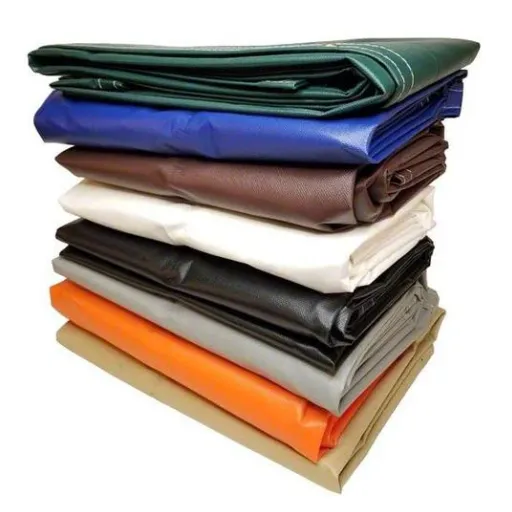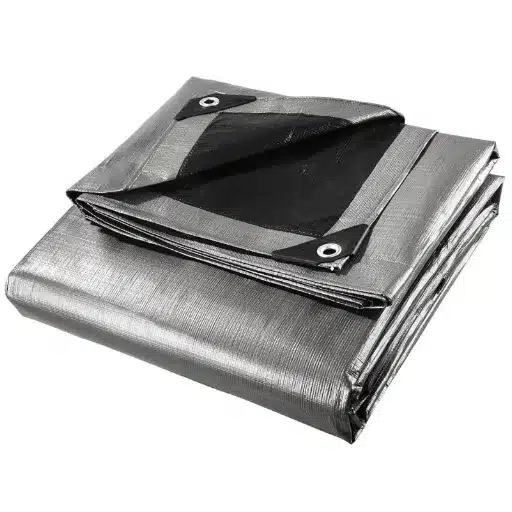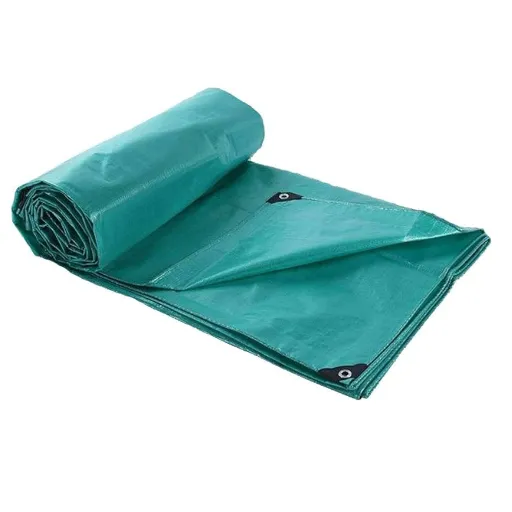Small waterproof tarp: an irreplaceable tool when weather becomes unpredictable while camping in the wild or when one’s precious possessions must be shielded. If you’re a frequent camper or undertake any DIY, or just a practical person who wants to safeguard equipment, then a perfect tarp can mean the world. This guide is designed to help you sift through the absurdity and land upon a waterproof tarp that really suits you. We’ll discuss materials, construction features, and various applications, basically everything you need to know before making a final decision. Get ready to embrace the knowledge that this seemingly simple piece of equipment can completely change the appeal of a service and grant you moments of relaxation in any situation.
Understanding Tarps
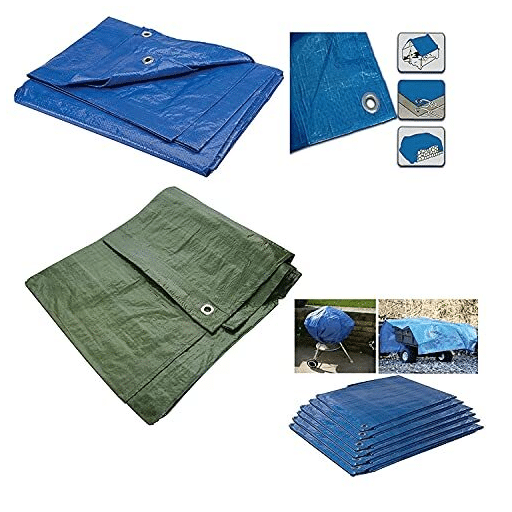
What Is a Tarp?
A tarp is the short form of tarpaulin; generally, the tarp is a tough, flexible sheet mostly made of waterproof or water-resistant materials, which include polyethylene, canvas, and vinyl. It serves protective and covering purposes and is used with some variations for testing purposes across industrial, commercial, and personal usages. Tarps usually come with reinforced edges and grommets through which they can be tied securely to ensure prolonged use in harsh environments. A modern tarp is designed to resist heavy rain, UV radiation, or extreme temperatures. Served by these properties, the tarp is, therefore, vital for many jobs, including protection of equipment or materials from weathering, construction of ad hoc shelters, or protection of goods being transported or stored from experiencing water damage. The inclusion of advanced manufacturing techniques has significantly contributed to enhancing the strength and flexibility of the tarp, thus cementing it as a useful and versatile tool in any industry.
Types of Tarps
Tarps are sorted into their different types depending on the composition of materials, their intended use, or special properties of each type. The most common include the following:
Polyethylene Tarps
Polyethylene tarps, known widely as poly tarps, are formed out of high-density polyethylene mesh reinforced by laminated polyethylene sheets. These tarps are highly resistant to water, UV stabilized, and quite light, thus making them useful in situations that require covering of outdoor equipment, forming temporary roofs, and a variety of agricultural uses.
Canvas Tarps
Canvas tarps are made of cotton or polyester of heavy duty that allows them to be breathable and very durable. Because of their tear and abrasion resistance, they are used in those applications where the tarp needs to breathe-air cover for machinery, or temporary enclosures for worksites. They are used more extensively in construction and painting.
Vinyl Tarps
Created for the heaviest industrial applications, vinyl tarps are coated with polyvinyl chloride (PVC), affording them extremely high UV resistance and resistance to chemicals, oil, and even the harshest weather condition. They are used predominantly in transportation to carry cargo secure, truck covering, or industrial warehouse.
Mesh Tarps
Mesh tarps are intended for application where air and light penetration is helpful; hence, they provide a degree of shade and reduce wind resistance. In their different states of permeability, they allow for gardening, construction fencing, privacy screening, etc.
Fire Retardant Tarps
Being made from special materials that have been coated to be flame resistant, fire-retardant tarps meet stringent requirements. These are widely used for welding sites, factories, and event setups where fire risk is high.
Depending on particular climate conditions and durability required for the task and industry regulations governing the trade, a particular tarp is suitable for a specific purpose. Search trends in recent years have shown how polyethylene tarps maintain popularity mostly because of their cheapness and versatile applications, whereas vinyl tarps are usually used in industrial and commercial fields where maximum durability is required.
Benefits of Using a Tarp
Tarps have a plethora of benefits in various applications, be it industrial or domestic uses. The main benefit of the tarp is to protect equipment, goods, and surfaces against elements such as rain, UV rays, and wind. On the other hand, tarps help reduce losses from damage, which promotes the efficiency of operations in construction, logistics, and agriculture. Search trends are demonstrating an increased interest in fire-retardant tarps because of their importance in minimizing the risk of fires in areas of extreme temperatures as well as stringent safety regulations. In contrast, polyethylene tarps are often searched for their value and lightweight features that allow them to serve as temporary solutions in everyday applications. Conversely, these most searched vinyl tarps demonstrate a demand for long-term use in industries that need greater resistance to chemicals, oils, and abrasion, as well as tensile strength. This shall give an idea of how consumers are perpetually selecting tarps that would best suit their needs in both operations and environments.
Features of Waterproof Tarps
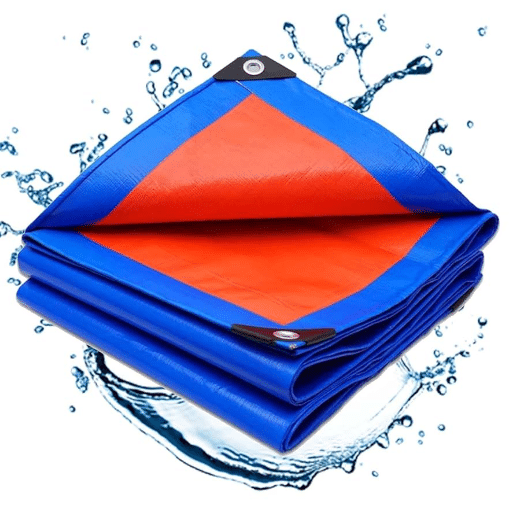
What Makes a Tarp Waterproof?
The waterproof nature of tarps is mostly determined by the material composition and its capacity to repel water under varying environmental conditions. Suited for high-grade waterproof tarps-the materials are vinyl, polyethylene, or polyurethane-coated fabrics, all inherently resistant to penetration by water. Typically, these tarps include seams heat-sealed or reinforced to ensure that water will not penetrate through the stitching or joints, thus presenting a completely water-impermeable surface. Advances in manufacturing techniques further provide better durability to withstand extreme weather conditions, including heavy rains or snow.
Recent trends in searches revealed an increasing trend toward specifications on the aspects of material quality and protective coatings when consumers research waterproof tarps. Queries mostly contain phrases such as “UV-coated tarps,” “polyethylene rainproofing,” and “vinyl tarp durability,” which indicate that users are concerned about water resistance and features like longevity when exposed to UV rays and resistance to mold or mildew. This acknowledges the fact that apart from water impermeability, these additional features are also instrumental in basic utility and consumer preferences for tarps.
Water Resistance vs. Waterproof
| Feature | Water-Resistant | Waterproof |
|---|---|---|
| Protection Level | Light moisture and brief exposure | Complete water defiance |
| Duration | Short-term use | Extended exposure |
| Weather Conditions | Light rain | Heavy downpours, standing water |
| Best For | Temporary cover | Permanent outdoor shelter |
There exists some confusion that water-resistant and waterproof are synonymous expressions, yet they differ in their level of protection from the penetration of water. Water-resistant items can handle slight moisture or water for a brief period of exposure, provided a significantly woven fabric or slight coating is used. For instance, under dry, light rain, the water-resistant tarp might do well in repelling water; however, it will almost never stop water from seeping through when exposed to extended exposure or heavy downpours.
Waterproof items, by contrast, offer total water defiance in an ample variety of conditions. Therefore, with its material focus; a heavy-duty vinyl tarp or a multi-layered polyethylene tarp should be tested even under a perpetual downpour or standing water. Recent search data from ”s source states ‘waterproof’ is now becoming synonymous with a guarantee of total protection, while ‘water resistance’ is seen as a premium feature only for low-end applications.
Understanding this distinction is key to translating into the consumer’s buying decision, mostly based on intended application. For instance, he who will require a constant outdoor shelter for sensitive equipment throughout the year would benefit hugely from the complete offerings of a totally waterproof tarp with UV protection. However, someone looking for temporary cover boosts might find crythe water-resistant tarp to adequate. Essentially, the choice between water resistance and waterproof depends on factors posed by the environment and use cases.
Breathable Materials for Tarps
Tarps with breathable materials allow air and moisture vapor to pass through while preventing larger particles or light precipitation from getting through. In any case, the advanced microporous films or woven fabrics typically work equally well. Recent search trends from the ”s search engine data showed that many consumers were looking for tarps with breathable properties for specific uses, including gardening, camping, or construction sites, where flow will discourage condensation and mold growth. For instance, these tarps are truly excellent for covering woodpiles because they allow moisture trapped beneath to escape, so less chance of decay. The demand for the product emphasizes combining breathability with durability and suggests a growing awareness of the importance of customized tarp performance for different environments. Hence, this stands as an alert in material science for further innovation to cater to breathable yet weather-resistant options.
Types of Small Waterproof Tarps
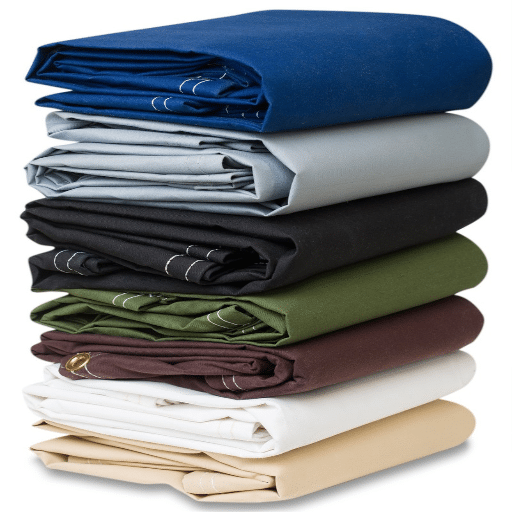
Canvas Tarps
One of the toughest materials that serve as coverings is also rubbery-tough and beautiful: canvas tarps. Heavy cotton fabrics or polyester-based are factory treated to produce a water-resistant cover, while the natural breathability of the fabric keeps moisture from building beneath. From ‘s analysis of search trends, it is clear that “canvas tarps” come under the most searched keywords, depicting that consumer demand is constant. A larger number of customers simultaneously petition the question: are canvas tarps really waterproof? It is important to understand that normal canvas tarps are water-resistant because of some treatments, wax, or oil-coated materials, meaning they will not stand a permanent band of water that drips down in heavy rain; therefore, direct exposure for a long time may result in seepage. Hence, with complete waterproofing, most customers search for tarps with an additional weatherproofing treatment or inquire about poly tarps as an alternative; the whole scenario here becomes a hindrance to balancing product viability with customer needs.
Poly Tarps
If you are to choose among the finest, complete waterproofing is one desired feature in applications, and poly tarps are there to provide just that. The need for heavy, weather-resistant solutions has been growing for some time, as evident from the spike in search inquiries on “fully waterproof tarps for outdoor use” from the ‘s search engine recent data. To live up to this merit, poly tarps utilize their specific manufacturing: the woven core provides strength, and the laminated outer layers offer waterproof performance. Alongside waterproofing capabilities, poly tarps are also resistant to sun rays, mildew, and tear, rendering them suitable for use amid all kinds of weather. Poly tarps are a suitable alternative for every customer who is looking for maximum protection against water penetration, and the popularity of this option up through nationwide and in trends speaks volumes of their practicality.
Vinyl Tarps
Vinyl tarps are considered a renowned item in terms of aptitude to resist and perform under a wide set of applications. Contrastingly, poly tarps consist of a polyester scrim coated with vinyl, whereas vinyl tarps provide good tensile strength and resistance against abrasion. Their heaviness makes them more suitable for industrial and commercial use such as construction, trucking, and agricultural storage. Plus they resist UV rays, water, oil, and chemicals; hence, in reality, they withstand long times even in the most difficult environments.
One of the popular questions about vinyl tarps is the heavy weather conditions while looking at the recent data from ‘s search engine. Heavy Weather means a heavy downpour combined with gales and stretches of severe sunshine. Search trends also point to increased usage of vinyl tarps by persons looking for heavyweight coverings that demand utmost resilience and longevity. It is synonymous with the reputation of this merchandise as the best solution for heavy-duty requirements.
Specifications to Consider
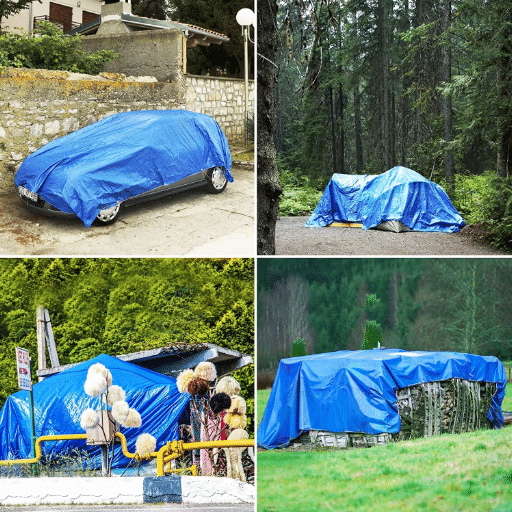
Inches Thickness and Durability
Mil thickness is one of the many other specifications used in determining the durability and strength offered to the tarp. Since the term “mil” is converted as a thousandth of an inch, one expects the higher the mil rating of the tarp, the more the tarp will withstand a level of physical pressure or offer resistance to being punctured or torn. Usually for heavy-duty applications, tarps will range in thickness from 10 to 40 mil; the heavier the application, the higher the mil rating and eventually, better resistance, such as in construction applications and industrial storage or agricultural applications.
💡 Pro Tip: A sharp increase in search queries for “25+ mil reinforced vinyl tarps” confirms the market shift to thicker, more durable materials in recent days. Users are almost certain of the need to directly deal with extreme conditions of abrasion, UV raditions, and heavy loading. These factors have increased manufacturers’ race to formulate multilayer tarpaulins strengthened with polyester scrim for assured good tensile strength together with excellent life span under highly stressing conditions. By checking the mil thickness and understanding the impact a tarpaulin would bring to their use, users can be more educated in making the right decision for their needs.
UV Resistance and Longevity
UV resistance plays a crucial role in determining the longevity and performance of the material, the assessment of which particularly regards outdoor use, where enough sunlight-hours can increase the speed with which the structure loses integrity. Studies show that polyethylene and PVC materials treated with UV inhibitors have a much greater potential for longevity, simply by reducing or slowing the photodegradation pathway induced by ultraviolet radiation. The recent search trends analyzed by ‘s search engine reveal that people have—increasingly so—been putting premium on products that will perform well in a harsh environment.
In answering the question go ingress, UV resistance has a direct correlation with the material longevity with UV inhibitors. These inhibitors absorb destructive UV rays or block them entirely from penetrating the materials, slowing their ageing process. For example, UV stabilized tarps retain their strength and flexibility for many years longer than the non-stabilized ones. Thus, users want to ensure that the product they choose has been tested for UV resistance, with specifications clearly defined, e.g., ASTM G154 or ISO 4892 UV exposure test.
Tear Resistance and Reinforced Edges
Tear resistance and reinforcement of the edges assure that these materials will last and remain structurally integral under the working loads imposed upon them in application. Tear resistance refers to a material’s capability to withstand a force that attempts to rip or split it under stress. Generally, high-quality tarpaulins help fend against tearing forces because of the tight weave of their material, whether of polyethylene or vinyl. According to data, higher denier materials or those with a ripstop pattern tend to give the best resistance to tearing because they dissipate the force over several fibers.
Reinforcement at the edges enhances durability by reducing the stress concentrated in the most vulnerable regions of the tarp. The reinforcement protects the edges through heat-sealing, double stitching, or by adding rope or webbing to strengthen the tensile forces acting on the edge and to stop direct abrasion and fraying of the surface material. Hence the best products combine the reinforcements with tough grommets set at every 18-36 inches, ensuring the fastening will never put stress on the surface and weaken it. Tear resistance-standard ASTM D2261, which measures tear strength, serves as something of a benchmark for performance testing. By combining development means of resisting tear and reinforced edge design optimizations, users will secure far more extension of the working life for these tarps in harsh field conditions or heavy use.
Uses for Small Waterproof Tarps
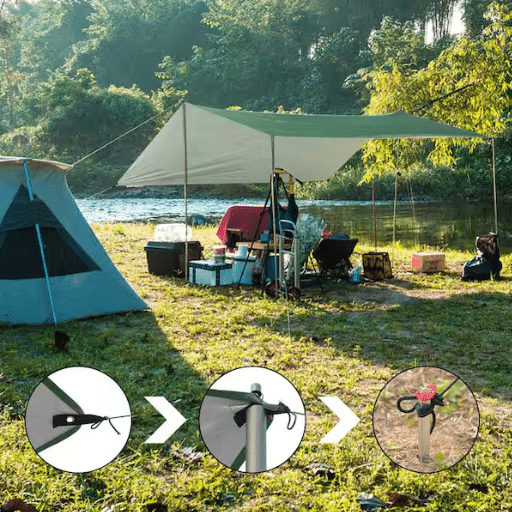
Camping and Outdoor Recreation
🏕️ Camping Applications
- ✓ Ground covers
- ✓ Rain shelters
- ✓ Windbreaks
- ✓ Equipment protection
Small waterproof tarps assume an essential role in camping and other outdoor activities on account of being lightweight and versatile. Recent search trends indicate that queries for “best waterproof tarps for camping” and for “lightweight durable tarps” have been increasingly spiking, indicative of the need for reliable means of shelter that can withstand the unpredictable weather. Camping tarps can also be used as camping grounds, rain shelters, or as windbreaks against environment contaminants like moisture, dirt, and UV rays. In choosing the outdoors materials, polyethylene or canvas materials treated for water resistance and UV stability are regarded best to impart longevity. Accordingly, their adaptive nature makes tarps handy when building temporary shelters or secondary roofing where terrains are remote and rugged.
Covering Machines and Vehicles
In the machinery, vehicle, and equipment cover business, heavy-duty tarps are indeed needed. Insuring the industrial assets against heavy rains, snow, and extreme UV rays are the popular reasons for ordering weatherproof tarps that are most adequately made of reinforced polyethylene or vinyl and capable of the same weather protection. The increased interest in the protection of valuable assets outdoors is shown in the searches for keywords such as “best weatherproof tarps for vehicles” and “UV-resistant equipment covers,” according to recent data from ‘s search engine. Equipped usually with rust-proof grommets and reinforced edges, these tarps allow for tie-down options that can be secured to offers stability during high winds or transport. Moreover, advancements in materials technology have increased abrasive resistance resulting in robust protection for so long in harsh environments, rendering these covers indispensable to construction, agriculture, and logistics professionals.
Home and Garden Applications
🏡 Popular Home Uses: Modern tarps perform a plethora of functions in a home versus a garden setting, adapting themselves for protective and organizational uses. Data from the latest search trends by ‘s suggest that people commonly seek answers to protection for outdoor furniture, firewood covers, and temporary shelter solutions for the various phases of seasonal changes or bad weather. Tarps made of polyethylene or vinyl are especially suited for these purposes because they are water-resistant and block UV rays. And because they are so easy to use, they can even be utilized as liners for a landscaping job, such as building a pond or checking soil erosion. Thanks to their durability and versatility, tarps can provide a practical and long-lasting solution for many household applications.
How to Choose the Right Small Waterproof Tarp
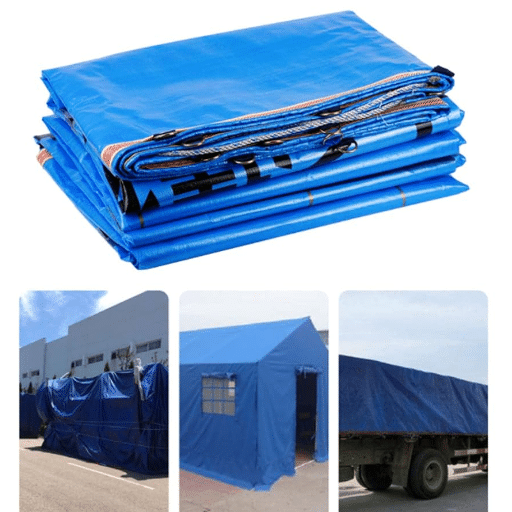
Assessing Your Needs
📋 Key Assessment Questions
- Primary Function: Will it be for outdoor protection against rain or indoor leak prevention?
- Size Requirements: What’s the area or object size that needs coverage?
- Material Preference: Do you need polyethylene for versatility or vinyl for heavy-duty use?
- Environmental Factors: What weather conditions will it face?
To effectively choose the right small waterproof tarp, it is important to begin by establishing the particular function it will serve. Is the tarp going to be for outdoor protection, such as protecting the equipment from the rainy day, or for indoor purposes, such as preventing leaks? Based on recent data from ‘s search engine, users frequently query size, material, and resistance to the environment when choosing a waterproof tarp. Where determining the size of the tarp is concerned, the size of the object or area that needs to be covered must be taken into consideration so that there will not be any unnecessary overhang, or insufficient coverage. Another point also about considering is the material composing the tarp, with polyethylene and vinyl being the most searched and therefore deemed most suitable for being water repellent and generally durable characteristics. Thus, matching your needs based on the above criteria along with trending searches will help you in making an informed, beneficial, and worthwhile purchase.
Comparing Heavy Duty and Lightweight Options
| Aspect | Heavy-Duty Tarps | Lightweight Tarps |
|---|---|---|
| Material | Reinforced polyethylene or heavy canvas | Standard polyethylene or vinyl |
| Durability | High resistance to tearing and weather | Moderate resistance |
| Best Applications | Industrial, construction, long-term outdoor | Temporary covering, camping, light use |
| Portability | Heavier, less portable | Easy to handle and transport |
Heavy versus light away? Considering the job, the performance of the materials, and the lifespan are very important issues to consider. They use heavy-duty reinforced polyethylene or heavy canvas and offer very high resistance to any tearing from weather and with prolonged use. They fit well for industrial applications, construction sites, or large-scale outdoor protection. They are light, though: made of ordinary thin polyethylene or vinyl. This makes them easily handled and transported, thus making them more suitable for temporary coverings or very light applications.
Heavy-duty tarps are searched for durability and protective qualities by consumers, reflecting their geographical preference for extreme weather exposure, according to the latest data on search engine trends. Lightweight tarps are searched for with portability in mind, usually for casual outdoor use like camping or short-term sorting. By juxtaposing these options with your individual needs, you can quite well address the dilemma between durability and convenience.
Evaluating Price vs. Quality
💰 Price vs. Quality Considerations
When evaluating the price against quality, one can assess it from the general recent search data trend, which indicates the priority followed by consumers. According to data from the search engine, cheap tarps with good quality are revealed by the public as requiring an initial cost stake; in areas of severe weather where its long-term reliability is upheld as being of paramount concern. Conversely, cheap and lightweight tarps gain popularity in searches on their short-term use cases, justifying their usefulness in activities that would take a short time or bear the least amount of impact. The utter challenge is to assess yourself if your regular exposure to weather extreme is anticipated; by so doing, you would be prioritizing more on durability than the initial cost and would garner greater value in the long term. On an occasional or bare minimum use, cheap options would fulfill the need more than efficiently without comprising on its basic utility idea. Therefore, by analyzing both market trends and your operational demands, you can strategically decide where to allocate resources for optimal performance.
Frequently Asked Questions (FAQs)
What is a little waterproof tarp used for?
A smaller waterproof tarp is some very versatile tool designed for a number of outdoor and indoor applications. From protecting firewood to sheltering or guarding outdoor furniture, the waterproof character ensures keep items dry even under a heavy downpour. Small tarps really come in handy as a ground cover for campers, keeping moisture away from camping gear. Furthermore, a small waterproof tarp will act as a cover for a few outdoor events or a picnic. Their light weight makes them a breeze to ferry, while some varieties of the blue poly tarp even give UV protection from the sun. All in all, these tarps are a very essential addition to anyone’s camping or outdoor supplies.
Are heavy duty waterproof tarps worthy of investment?
Certainly, heavy duty waterproof tarps are worthy of investment for those who require durability and longevity in their outdoor corner. They are made to resist harsh weather conditions, making them perfect for outdoor use: for covering RVs or pools. Their heavy-duty makeup is usually UV resistant and tear resistant not to rip up easily or degrade. Then, the heavy duty tarps are commonly reinforced with grommets for easy securing and anchoring from afar. Buying a heavy duty waterproof tarp is to ensure that one will be able to use it for different purposes: from camping trips to emergency cover. Hence, their heavy-duty nature makes a very good choice to anyone in need of dependable waterproof blanket.
What sizes are small tarps available in?
The small tarps come in different sizes to cater to different needs. You could generally get options, such as a tarp 8x10ft for your small outdoor project or camping setup. Other possible sizes are 6×8 feet, suitable for small areas or light usage. And aside, even smaller ones that serve specific needs-for example, keeping firewood or outdoor furniture dry. There are also multipurpose small tarps that can be used for creating shade or as a waterproof cover for outdoor activities. The array of sizes draws so that you can make the best choice for your tarp according to your needs.
How do I select a waterproof tarp for camping?
Selecting whatever tarp is right for camping entails considering several options. First, check for water-resistant and UV-resistant tarps that will shield against rain and sun exposure. Heavy-duty tarps are often highly recommended for camping due to their sturdiness and capability to endure bad weather. Size matters: choose a tarp of 8x10ft or something close to that amount of area sufficient for covering your tent or gear. Also, consider tarps with grommets for easy setup and securing. Materials like polyethylene or PVC vinyl tarpaulin offer excellent waterproof protection and are tear-resistant on top of that. Also, do check whether the tarp comes manufactured along with reinforced edges for durability through time.
Can a small tarp be used to cover outdoor furniture?
Yes, a small tarp can very well cover outdoor furniture. It will serve to make sure the furniture remains dry from rain and snow and keep up with energy from the sun for the longest time possible. Tarpaulin for that purpose should rather be heavy-duty and UV resistant for variable weather penetrating. Protective tarps made from polyethylene or having mil thickness weigh well in that area. Grommets can also belaid down to various pockets; these help in fastening the tarpaulin well, so strong winds will not blow it off while in use. All in all, a small waterproof tarp is a great way to save your outdoor furniture from the elements.
What characteristics should I look for in waterproof heavy duty tarps?
Certain characteristics in waterproof heavy duty tarps greatly increase its performance and durability. The thickness of the material should be considered first; for instance, those 10 mil and above have very good protection against tears and punctures. Again, go for a tarp that is UV resistant so it will not fade or degrade from exposure to the sun. Reinforced grommets are also really important, as they allow for firm anchoring and keep the tarp from tearing around the edge. Another thing to consider is the type of material; heavy duty poly tarps and PVC vinyl tarpaulin are both perfect options for durable and waterproof protection. Lastly, make sure it will weatherproof so that it can be used in any kind of outdoor setting.
Reference Sources
📚 Additional Resources
- UNICOR – Tarps/Salvage Covers, Flame Retardant: This government website provides details about canvas tarpaulins, including their water-resistant and durable properties. Visit Source
- Louisiana Wildlife and Fisheries – Hammock Tarp Ultralight: This source discusses waterproofing features of tarps, including siliconized and PU-coated materials for reliable weather protection. Visit Source
- Louisiana Wildlife and Fisheries – Yescom Heavy-Duty Tarp: This page highlights heavy-duty tarps with mesh coating, suitable for rain and dust protection, and their versatile applications. Visit Source

